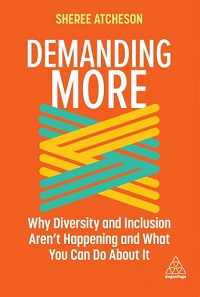2020 was a uniquely disruptive year, bringing with it a global pandemic and the globalisation of support for the Black Lives Matter anti-racist movements. As a result, diversity, equity, and inclusion (DE&I) has scaled the business agenda and leaders are looking for expertise in this area. This is reflected by the substantial spike in DE&I focused roles posted on LinkedIn in May and early June.
As this momentum continues into 2021, DE&I professionals may have a real opportunity to drive change within organisations. But first, they must create an effective Diversity and Inclusion strategy. While any strategy needs to be tailored to an organisation’s specific needs, I’d advise any DE&I leader to strongly consider these three themes: Engage, Teach and Action.
Engage
First of all, leaders need to rally their entire organisation to engage in DE&I efforts. Ensure business goals and DE&I goals are linked. Company-wide channels, including all-hands meetings, Slack and Teams groups, can be hugely helpful in reaching everyone.
But, leaders also need to consider how they reach people in smaller groups or individually. Formalised DE&I focus groups can be useful as they bring together employees from various backgrounds and enable leaders to stress-test potential DE&I initiatives from diverse perspectives. Even smaller Employee Resource Groups (ERG’s) can also help ensure each employee is heard. These provide a safe space for underrepresented groups to voice any concerns and highlight their priorities.
However, it’s also important to give all employees access to a platform like ours that allows them to leave regular and confidential feedback and insights. This means every employee can safely put forward their view – even if they feel uncomfortable sharing it publicly. Psychological safety is key here.
The goal is for every employee to find their culture and values reflected in the ethos of the organisation. Something as simple as creating a company-wide calendar to highlight events and festivals across cultures, ethnicities and identities can help here. Bringing together employees to celebrate or support a particular event is a great way to engage them in DE&I objectives more generally – and create a collective sense of ownership.
Teach
Education is key to any successful DE&I strategy – and this needs to happen across all levels of an organisation, including senior leadership. Biases are often unconscious and more often unchecked. Hence, people need the education to identify them first, which may shine a hard light on society’s inequities that have permeated many of our thought-processes and decision-making. This is where collecting company-wide, anonymous data is essential so that you can really understand the health of DE&I in your organisation. Once you’re clear on that, education on topics such as privilege awareness, anti-racism and allyship is a good next step. Sessions should be mandatory for all and complemented with online learning paths.
Engaging with your hiring teams and interviewers on these topics is important too, as these people are the gatekeepers for all new talent entering the organisation. Recruitment must be well-rounded and free from bias – otherwise, how will organisations achieve and retain diverse workforces? DE&I education should also be central to all onboarding programmes so that employees recognise its importance right from the outset. Analysis should be done on your hiring process to understand where/if people from underrepresented groups fall out of the pipeline and intervene as needed.
It can be useful to create and distribute an internal handbook to provide a permanent record of all DE&I reports, toolkits and policies. This needs to be made available to the entire company to digest and reference it at their own pace.
Action
Employers can only create truly diverse and inclusive environments by first analysing and challenging their own processes. Designing a strategy without first doing this is equivalent to building a house without foundations – or worse, rotten ones.
Data is the great enabler here. By analysing trends in hiring or promotions data, employers can see straight away if they’re demonstrating a preference to a particular group of people. Once this data is collected, it needs to be reviewed from diverse perspectives to avoid injecting bias into the analysis.
Equipped with quantitative and qualitative insights, DE&I leaders can set about developing a blueprint for change and measuring their actions’ efficacy. If they find that their hiring process often targets individuals from similar backgrounds, for example, they can look at ways to widen the recruitment net and putting in place strategies such as the Rooney Rule, to ensure time and effort is spent in widening the pipeline and interviewing all qualified candidates, before making a hiring decision.
The guidelines above are just a starter-pack for those with DE&I responsibilities looking to implement a successful strategy. Of course, other things need consideration, such as how well any initiatives and policies translate to the virtual world of work many of us are now in.
Fundamentally though, listening intelligently to each employee will help you to forge the path to real transformational change. Employees must be allowed to share their views and concerns – and leaders must be transparent on how these have fed into their DE&I strategy. This is crucial for ensuring that your employees come on this journey with you and power your organisation towards a more diverse, equal, and inclusive future.

DiversityQ‘s readers can purchase Sheree Atcheson‘s (@nirushika) new book Demanding More from Kogan using the discount code DEMANDINGMORE, for 20% off. It is also available from Amazon and Good Reads.









